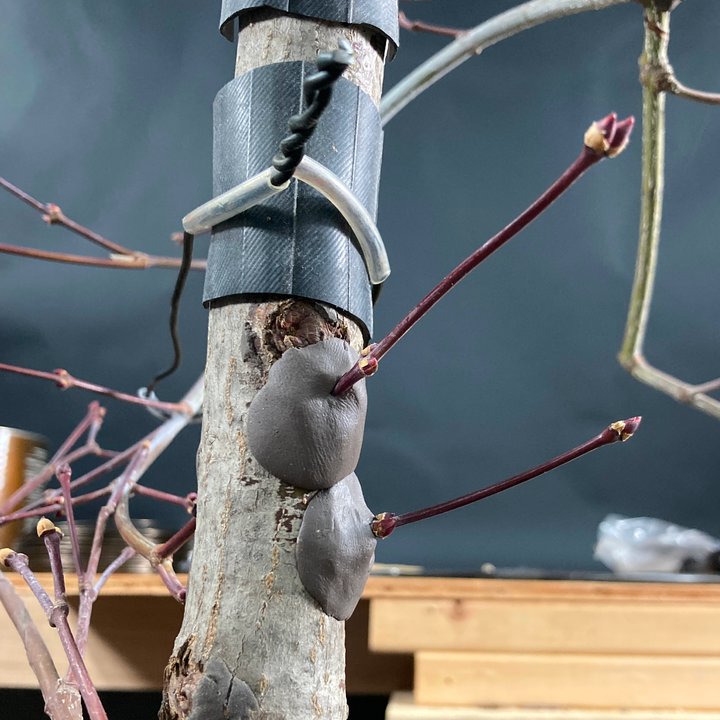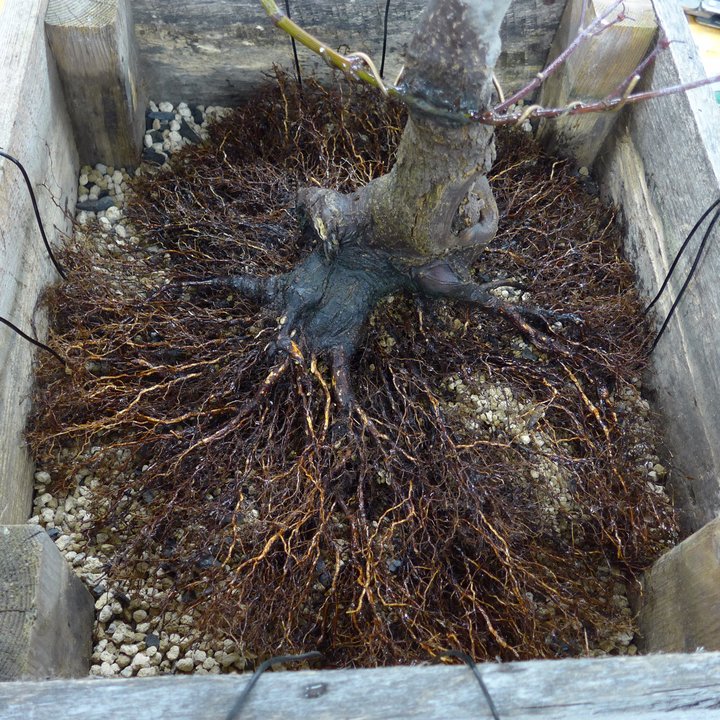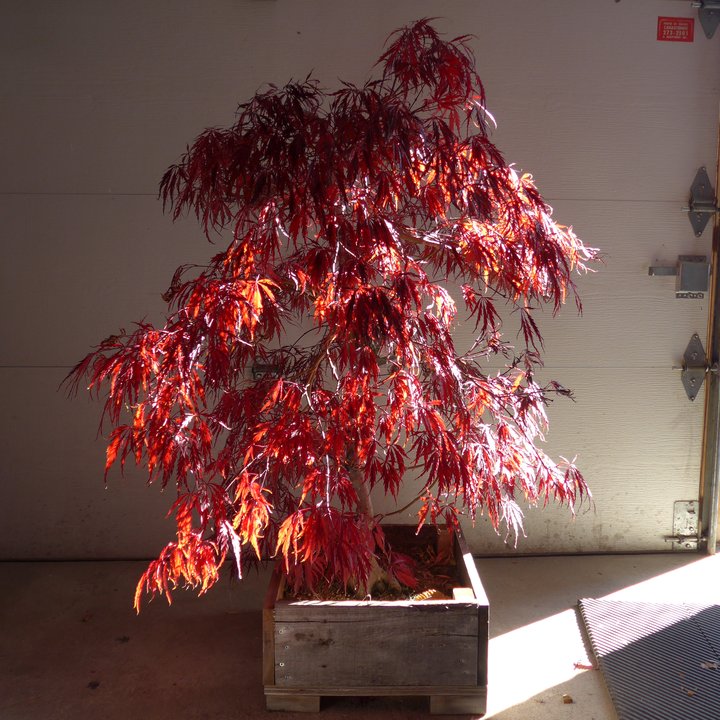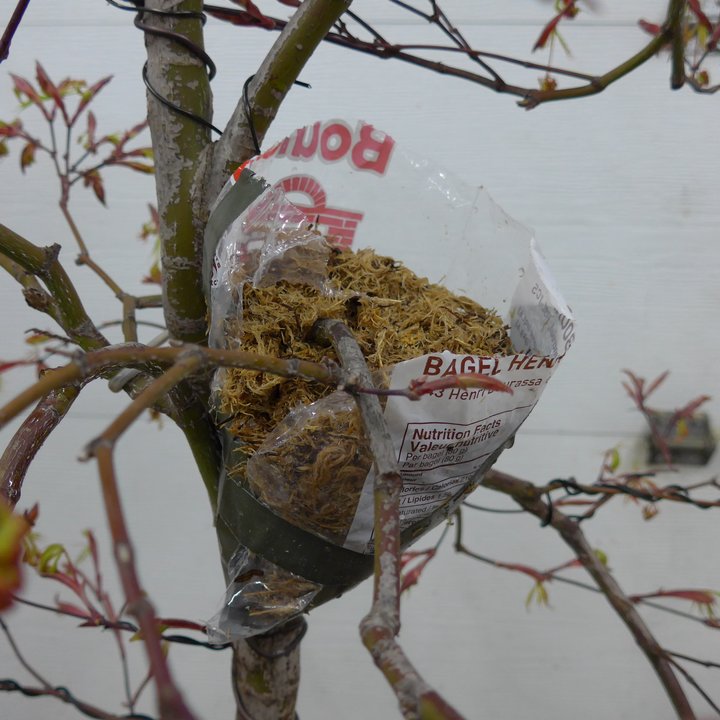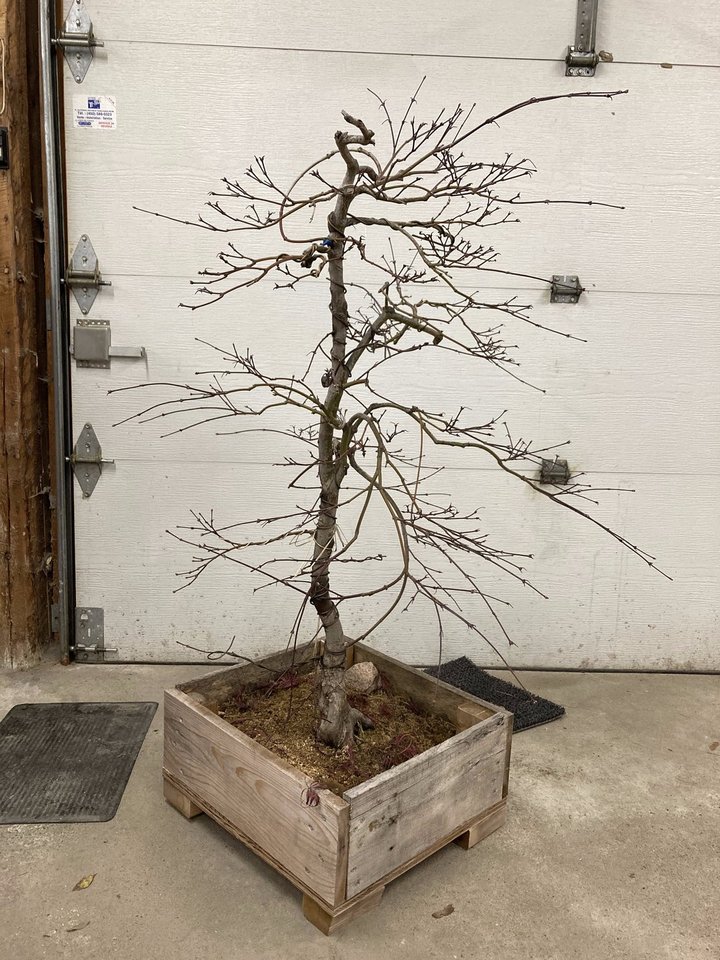I experiment with this Japanese Maple ‘Tamukeyama’ since 2015. The nebari is already fractal but the branching structure still needs to be built. This spring 2023 I grafted two new branches mid-way along the trunk and air-layered the top half to compact the tree.
...
We barely encounter Acer palmatum dissectum trained as bonsai. They have a bad reputation because they do not respond well to partial defoliation because of their finely dissected leaves. This translates into longer development time than regular Acer palmatum. Notwithstanding that it will take me twice the time to achieve my goals, I persist with this Japanese maple of the ‘Tamukeyama’ variety purchased in 2014 in a renovation center.
I am really excited by this nebari after the third root work iteration.
...
This Acer palmatum var. dissectum ‘Tamukeyama’ was ready for a major styling. I cut back the branches to develop a more compact silhouette and improve ramification closer to the trunk. The wheeping branches were wired upwards. New branches will be grafted in spring.
...
This Japanese maple has a 4-branches junction half-way from the ground. Before this causes an inverse taper I decided to air-layer a small branch that will be used later for grafting. The tree is more than 1 meter tall and the trunk will also be air-layered in a year or two to build a more compact tree.
Acer palmatum ssp. dissectum var 'Tamukeyama' Jonction with 4 branches that will cause inverse taper if no action is taken Where we want to see roots grow, the bark and cambium are removed completely to expose the xylem, on a length of at least two times the diameter.
...
This Japanese maple is an Acer palmatum ssp. dissectum var ‘Tamukeyama’ and was bought in 2014 in a big renovation store at a discount price. In fall, all branches were cut back close to the trunk.
Here is what the same tree looks like 6 years later:
Ramification techniques Branch ramification is promoted by the means of the following 4 techniques or principles:
using an inorganic substrate with medium particle sizes feeding solely with slow release organic fertilizer pruning branches every winter to balance vigour throughout the tree grafting new branches along the trunk During winter pruning, branches with short internodes are wired and positioned to maximize air and light exposure in the growing season. Those with long internodes are cut-back unless we need to increase the girth of the branch and trunk section below it.
...
